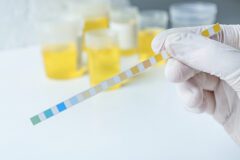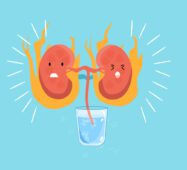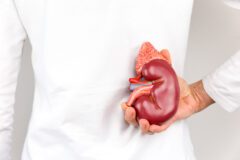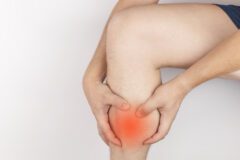Staff
User Name: You need to be a registered (and logged in) user to view username.
Total Articles : 275
https://curationofknowledge.com
I manage the admin at this site and post articles of interest.
We use cookies to help you navigate efficiently and perform certain functions. You will find detailed information about all cookies under each consent category below.
The cookies that are categorized as "Necessary" are stored on your browser as they are essential for enabling the basic functionalities of the site. ...
Necessary cookies are required to enable the basic features of this site, such as providing secure log-in or adjusting your consent preferences. These cookies do not store any personally identifiable data.
Functional cookies help perform certain functionalities like sharing the content of the website on social media platforms, collecting feedback, and other third-party features.
Analytical cookies are used to understand how visitors interact with the website. These cookies help provide information on metrics such as the number of visitors, bounce rate, traffic source, etc.
Performance cookies are used to understand and analyze the key performance indexes of the website which helps in delivering a better user experience for the visitors.
Advertisement cookies are used to provide visitors with customized advertisements based on the pages you visited previously and to analyze the effectiveness of the ad campaigns.
Last Updated:
October 4, 2024
 “The Penelopiad” is a novel by Canadian author Margaret Atwood. It is a retelling of the Greek myth of Odysseus and his wife Penelope from her point of view. The novel is narrated by Penelope, who is in the Underworld after her death. She tells her story to the reader, describing her life as a young girl in Sparta, her marriage to Odysseus, and her life on the island of Ithaca while her husband was away at war. Penelope also gives voice to the twelve maids who were hanged by her husband upon his return to Ithaca. In the original myth, these maids were considered disloyal and unfaithful, but in “The Penelopiad”, Penelope presents a different interpretation of their actions and the consequences they faced. Throughout the novel, Penelope explores themes of gender, power, and storytelling. She reflects on the limited agency she had as a woman in ancient Greece, the ways in which her story has been distorted and appropriated by others, and the importance of telling one’s own story. “The Penelopiad” is a thoughtful and imaginative retelling of a classic myth, giving voice to a female character who has traditionally been overshadowed by her heroic husband. Atwood’s prose […] read more
“The Penelopiad” is a novel by Canadian author Margaret Atwood. It is a retelling of the Greek myth of Odysseus and his wife Penelope from her point of view. The novel is narrated by Penelope, who is in the Underworld after her death. She tells her story to the reader, describing her life as a young girl in Sparta, her marriage to Odysseus, and her life on the island of Ithaca while her husband was away at war. Penelope also gives voice to the twelve maids who were hanged by her husband upon his return to Ithaca. In the original myth, these maids were considered disloyal and unfaithful, but in “The Penelopiad”, Penelope presents a different interpretation of their actions and the consequences they faced. Throughout the novel, Penelope explores themes of gender, power, and storytelling. She reflects on the limited agency she had as a woman in ancient Greece, the ways in which her story has been distorted and appropriated by others, and the importance of telling one’s own story. “The Penelopiad” is a thoughtful and imaginative retelling of a classic myth, giving voice to a female character who has traditionally been overshadowed by her heroic husband. Atwood’s prose […] read more  Mountains are some of the most breathtaking and awe-inspiring features of the natural world. They have captivated human imagination since time immemorial, drawing explorers, adventurers, and climbers to their soaring heights. Among the world’s mountains, few can compare to the majestic peaks of the Himalayas, home to the highest mountains in the world. The Himalayas are a range of mountains that form a natural barrier between the Indian subcontinent and the Tibetan Plateau. They stretch over 2,400 km from the Indus River in Pakistan to the Brahmaputra River in northeastern India. The Himalayas are home to many of the world’s highest peaks, including the tallest mountain on Earth, Mount Everest. Mount Everest, also known as Sagarmatha in Nepali and Chomolungma in Tibetan, is the highest mountain in the world. It stands at an incredible height of 8,848 meters (29,029 feet) above sea level. The peak is located in the Mahalangur Himal sub-range of the Himalayas, on the border between Nepal and Tibet. The first successful ascent of Mount Everest was made in 1953 by Sir Edmund Hillary and Tenzing Norgay. But Mount Everest is not the only towering peak in the Himalayas. In fact, the Himalayas are home to 10 […] read more
Mountains are some of the most breathtaking and awe-inspiring features of the natural world. They have captivated human imagination since time immemorial, drawing explorers, adventurers, and climbers to their soaring heights. Among the world’s mountains, few can compare to the majestic peaks of the Himalayas, home to the highest mountains in the world. The Himalayas are a range of mountains that form a natural barrier between the Indian subcontinent and the Tibetan Plateau. They stretch over 2,400 km from the Indus River in Pakistan to the Brahmaputra River in northeastern India. The Himalayas are home to many of the world’s highest peaks, including the tallest mountain on Earth, Mount Everest. Mount Everest, also known as Sagarmatha in Nepali and Chomolungma in Tibetan, is the highest mountain in the world. It stands at an incredible height of 8,848 meters (29,029 feet) above sea level. The peak is located in the Mahalangur Himal sub-range of the Himalayas, on the border between Nepal and Tibet. The first successful ascent of Mount Everest was made in 1953 by Sir Edmund Hillary and Tenzing Norgay. But Mount Everest is not the only towering peak in the Himalayas. In fact, the Himalayas are home to 10 […] read more  Urea is a nitrogenous chemical substance which is formed from the liver via the metabolic breakdown with aminoacids, what are the foundations of healthy proteins. It is then moved throughout the blood vessels to the renal system, where it’s filtered and then passed in the form of the urine. Even though the major use of urea would be to clear away nitrogenous waste products from the body, additionally, it possesses other necessary functions in maintaining your body’s all-around health. One of several crucial functions of urea is to try to manage the human body’s water balance. It can this through raising the volume of urea in the circulation, which pulls water out from the cells and tissues and then into the bloodstream. This procedure helps you to maintain your system’s fluid balance, that is needed for appropriate hydration along with the correct functioning of numerous internal organs and systems in your body. The urea in addition plays a vital role in the process of protein functionality, that is the process by which your body makes proteins. As aminoacids are separated to create urea, a lot of the byproducts are utilized to create new proteins. This technique is crucial for sustaining […] read more
Urea is a nitrogenous chemical substance which is formed from the liver via the metabolic breakdown with aminoacids, what are the foundations of healthy proteins. It is then moved throughout the blood vessels to the renal system, where it’s filtered and then passed in the form of the urine. Even though the major use of urea would be to clear away nitrogenous waste products from the body, additionally, it possesses other necessary functions in maintaining your body’s all-around health. One of several crucial functions of urea is to try to manage the human body’s water balance. It can this through raising the volume of urea in the circulation, which pulls water out from the cells and tissues and then into the bloodstream. This procedure helps you to maintain your system’s fluid balance, that is needed for appropriate hydration along with the correct functioning of numerous internal organs and systems in your body. The urea in addition plays a vital role in the process of protein functionality, that is the process by which your body makes proteins. As aminoacids are separated to create urea, a lot of the byproducts are utilized to create new proteins. This technique is crucial for sustaining […] read more  Kidney (renal) dialysis is a medical procedure currently in use to treat those that have kidney (renal) failure, often known as end-stage renal disease (ESRD). Your kidneys are a set of vital organs that handle filtering waste and also excessive body fluids from the blood, in addition to sustaining the balance of important nutrients and hormones in the body. When the kidneys aren’t able to perform these kinds of functions effectively, waste materials as well as fluids accumulate within the body, ultimately causing really serious medical problems. Kidney dialysis is really a life saving therapy that artificially takes on the roles of the kidneys, eliminating waste materials in addition to extra fluids from the body. The procedure is done by filtering the blood by using a machine called a dialysis machine, that contains a semi-permeable membrane layer that separates waste materials and excess body fluids from the blood. The filtered blood will be taken back to the body. There’s two main kinds of kidney dialysis: hemodialysis and peritoneal dialysis. Hemodialysis is among the most frequent type of dialysis that necessitates the use of a dialysis machine as well as an manufactured kidney, called an artificial kidney dialysis device. The patient’s […] read more
Kidney (renal) dialysis is a medical procedure currently in use to treat those that have kidney (renal) failure, often known as end-stage renal disease (ESRD). Your kidneys are a set of vital organs that handle filtering waste and also excessive body fluids from the blood, in addition to sustaining the balance of important nutrients and hormones in the body. When the kidneys aren’t able to perform these kinds of functions effectively, waste materials as well as fluids accumulate within the body, ultimately causing really serious medical problems. Kidney dialysis is really a life saving therapy that artificially takes on the roles of the kidneys, eliminating waste materials in addition to extra fluids from the body. The procedure is done by filtering the blood by using a machine called a dialysis machine, that contains a semi-permeable membrane layer that separates waste materials and excess body fluids from the blood. The filtered blood will be taken back to the body. There’s two main kinds of kidney dialysis: hemodialysis and peritoneal dialysis. Hemodialysis is among the most frequent type of dialysis that necessitates the use of a dialysis machine as well as an manufactured kidney, called an artificial kidney dialysis device. The patient’s […] read more  ‘So long, and thanks for all the fish’ is really a key phrase that comes from Douglas Adams’ book ‘The Hitchhiker’s Guide to the Galaxy’. In this book, this is a goodbye communication left from the dolphins as soon as they leave the planet Earth, right before it is demolished to make way for a hyperspace go around. The words has since become a trendy catchphrase, generally utilized to voice thankfulness in a humorous or cynical method. The expression ‘So long, and thanks for all the fish‘ includes many concepts which might be core to Adams’ book, such as the idea that life is commonly odder than fiction, the very idea of the universe being a huge and incomprehensible place, and also the concept that when confronted with such vastness, you must have a perception of humor. The dolphins’ departure message in addition features the thought that life is ephemeral, knowing that perhaps the nearly all relatively permanent things will vanish instantly. In a broader sense, the expression ‘So long, and thanks for all the fish‘ can even be interpreted as a discourse on our connection with the natural world. The dolphins’ departure message is a indication that our actions […] read more
‘So long, and thanks for all the fish’ is really a key phrase that comes from Douglas Adams’ book ‘The Hitchhiker’s Guide to the Galaxy’. In this book, this is a goodbye communication left from the dolphins as soon as they leave the planet Earth, right before it is demolished to make way for a hyperspace go around. The words has since become a trendy catchphrase, generally utilized to voice thankfulness in a humorous or cynical method. The expression ‘So long, and thanks for all the fish‘ includes many concepts which might be core to Adams’ book, such as the idea that life is commonly odder than fiction, the very idea of the universe being a huge and incomprehensible place, and also the concept that when confronted with such vastness, you must have a perception of humor. The dolphins’ departure message in addition features the thought that life is ephemeral, knowing that perhaps the nearly all relatively permanent things will vanish instantly. In a broader sense, the expression ‘So long, and thanks for all the fish‘ can even be interpreted as a discourse on our connection with the natural world. The dolphins’ departure message is a indication that our actions […] read more  Chronic kidney disease (CKD) and acute kidney disease (AKD) are two different types of kidney problems that have distinct causes, symptoms, and treatments. Chronic kidney disease is a long-term, progressive loss of kidney function over a period of months or years. This type of kidney disease is usually caused by a number of factors such as diabetes, high blood pressure, and glomerulonephritis. Symptoms of CKD may not appear until the disease is in an advanced stage and can include fatigue, nausea, itching, and fluid buildup. Treatment for CKD typically involves controlling underlying causes, managing symptoms, and reducing further damage to the kidneys. In some cases, dialysis or kidney transplantation may be necessary. Acute kidney disease, on the other hand, is a sudden and often temporary loss of kidney function that can occur as a result of injury, infection, or other factors that cause damage to the kidneys. AKD usually develops over a matter of days or weeks and can cause symptoms such as decreased urine output, swelling, and muscle cramps. Treatment for AKD typically involves addressing the underlying cause, such as treating an infection or correcting a medication issue, and may involve hospitalization. In severe cases, dialysis may be necessary. […] read more
Chronic kidney disease (CKD) and acute kidney disease (AKD) are two different types of kidney problems that have distinct causes, symptoms, and treatments. Chronic kidney disease is a long-term, progressive loss of kidney function over a period of months or years. This type of kidney disease is usually caused by a number of factors such as diabetes, high blood pressure, and glomerulonephritis. Symptoms of CKD may not appear until the disease is in an advanced stage and can include fatigue, nausea, itching, and fluid buildup. Treatment for CKD typically involves controlling underlying causes, managing symptoms, and reducing further damage to the kidneys. In some cases, dialysis or kidney transplantation may be necessary. Acute kidney disease, on the other hand, is a sudden and often temporary loss of kidney function that can occur as a result of injury, infection, or other factors that cause damage to the kidneys. AKD usually develops over a matter of days or weeks and can cause symptoms such as decreased urine output, swelling, and muscle cramps. Treatment for AKD typically involves addressing the underlying cause, such as treating an infection or correcting a medication issue, and may involve hospitalization. In severe cases, dialysis may be necessary. […] read more  Collecting coins is a hobby that has been enjoyed by people of all ages for centuries. Whether you’re a beginner just starting out or an experienced collector looking to expand your collection, there are several important steps to follow to help ensure that your coin collecting experience is a success. By following these steps, you’ll be well on your way to building a successful coin collection. Whether you’re interested in historical coins, rare coins, or simply coins that have a unique design, the most important thing is to enjoy the process and have fun! Advertisement: I get commissions for purchases made through links on this website. As an Amazon Associate I earn from qualifying purchases. read more
Collecting coins is a hobby that has been enjoyed by people of all ages for centuries. Whether you’re a beginner just starting out or an experienced collector looking to expand your collection, there are several important steps to follow to help ensure that your coin collecting experience is a success. By following these steps, you’ll be well on your way to building a successful coin collection. Whether you’re interested in historical coins, rare coins, or simply coins that have a unique design, the most important thing is to enjoy the process and have fun! Advertisement: I get commissions for purchases made through links on this website. As an Amazon Associate I earn from qualifying purchases. read more  Severs disease is a common disorder with the heel (calcaneus) bone in youngsters that impacts the developing plate or area at the back of the heel bone. This growing region between this development plate at the back of the heel bone and the primary body of the heel bone is at risk from injury whilst the kid is growing particularly when there are greater levels of athletic activity, or the youngster is overweight. The common symptoms are discomfort on activity, pain at the back of the heel bone in addition to pain when compressing the sides of the calcaneus bone. The signs and symptoms is likely to become worse with increased levels of sports. Usually, treatment is with altering or decreasing the activity levels along with dealing with expectations of the child along with parents. A shock reduction heel insert can be used to protect the heel bone when actively playing sports activity. In the most severe cases the kid may be placed into a walking support to really minimize physical activity and guard the calcaneus. Severs disease is really a self-limiting condition and it always will get better as that growing region at the back of the heel bone […] read more
Severs disease is a common disorder with the heel (calcaneus) bone in youngsters that impacts the developing plate or area at the back of the heel bone. This growing region between this development plate at the back of the heel bone and the primary body of the heel bone is at risk from injury whilst the kid is growing particularly when there are greater levels of athletic activity, or the youngster is overweight. The common symptoms are discomfort on activity, pain at the back of the heel bone in addition to pain when compressing the sides of the calcaneus bone. The signs and symptoms is likely to become worse with increased levels of sports. Usually, treatment is with altering or decreasing the activity levels along with dealing with expectations of the child along with parents. A shock reduction heel insert can be used to protect the heel bone when actively playing sports activity. In the most severe cases the kid may be placed into a walking support to really minimize physical activity and guard the calcaneus. Severs disease is really a self-limiting condition and it always will get better as that growing region at the back of the heel bone […] read more  Choosing surgical treatment for a knee joint damage or severe knee pain is often an intimidating decision. In the end, there is a lot of uncertainty that accompanies going through major surgery. But the good news is that knee joint substitution surgical treatment is generally extremely effective in treating pain along with reestablishing mobility in individuals. In this write-up, we’ll have a close look at how useful knee joint replacement surgery is generally and just how this compares with other remedies for severe knee pain. We are going to furthermore talk about the potential risks linked to the operation, plus some techniques to ensure the process of healing goes without problems. Just what is knee joint replacement surgery? Joint replacement surgical treatment is an operation that requires replacing the destroyed or compromised joint with an artificial joint. The goals of this surgery are to reduce discomfort, increase mobility, and provide a far more typical alignment to the knee. There are various types of knee joint replacement surgery, that will be contingent on your surgeon according to your individual situation. The commonest kind of knee replacement surgery is total knee replacement (TKR). In this surgery, the operating surgeon cleans away the […] read more
Choosing surgical treatment for a knee joint damage or severe knee pain is often an intimidating decision. In the end, there is a lot of uncertainty that accompanies going through major surgery. But the good news is that knee joint substitution surgical treatment is generally extremely effective in treating pain along with reestablishing mobility in individuals. In this write-up, we’ll have a close look at how useful knee joint replacement surgery is generally and just how this compares with other remedies for severe knee pain. We are going to furthermore talk about the potential risks linked to the operation, plus some techniques to ensure the process of healing goes without problems. Just what is knee joint replacement surgery? Joint replacement surgical treatment is an operation that requires replacing the destroyed or compromised joint with an artificial joint. The goals of this surgery are to reduce discomfort, increase mobility, and provide a far more typical alignment to the knee. There are various types of knee joint replacement surgery, that will be contingent on your surgeon according to your individual situation. The commonest kind of knee replacement surgery is total knee replacement (TKR). In this surgery, the operating surgeon cleans away the […] read more  Leg cramps are usually thought as the reflex firing of just one or a group of muscles and all of us have all most likely had more then one. The unpredictable onset of the pain sensation with the cramp, mainly in the calf muscle groups is often rather distressing. Whilst it really doesn’t continue for very long it could leave you in agony and distressed throughout the cramping. The classic symptoms of a cramp in the lower leg are a sudden start, generally having a twitching like sensation. The anguish may be agonizing. The muscle groups can be sensitive having a hardness feeling as well as a tense feeling in the stricken muscle tissue. There is typically a lack of ability to move the stricken leg. There will be zero correlation in between age group and lower leg cramps but older people do have a tendency to cramp a lot more than the younger individuals. The night time leg cramping which occur during the night might be troublesome because they obstruct a person’s sleep making them experiencing lethargic and tired. The specific cause of the cramps as well as the mechanism isn’t really clear, but a range of variables can […] read more
Leg cramps are usually thought as the reflex firing of just one or a group of muscles and all of us have all most likely had more then one. The unpredictable onset of the pain sensation with the cramp, mainly in the calf muscle groups is often rather distressing. Whilst it really doesn’t continue for very long it could leave you in agony and distressed throughout the cramping. The classic symptoms of a cramp in the lower leg are a sudden start, generally having a twitching like sensation. The anguish may be agonizing. The muscle groups can be sensitive having a hardness feeling as well as a tense feeling in the stricken muscle tissue. There is typically a lack of ability to move the stricken leg. There will be zero correlation in between age group and lower leg cramps but older people do have a tendency to cramp a lot more than the younger individuals. The night time leg cramping which occur during the night might be troublesome because they obstruct a person’s sleep making them experiencing lethargic and tired. The specific cause of the cramps as well as the mechanism isn’t really clear, but a range of variables can […] read more